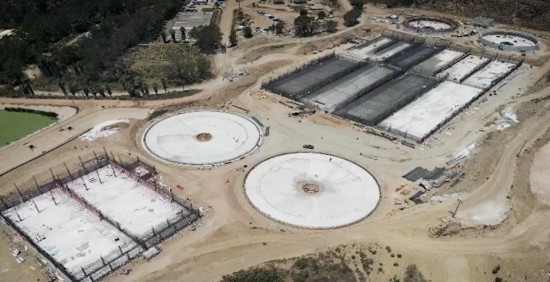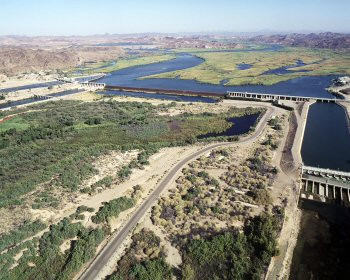La cooperación binacional y la gestión hídrica de la región Baja California – California
Durante la edición del Baja Investor Summit 2024, la Gobernadora del Estado de Baja California, Marina del Pilar Ávila, destacó la importancia del desarrollo económico de la región fronteriza así como del papel que dicho Estado ha asumido como un actor relevante para impulsar la inversión estratégica en infraestructura ambiental, a fin de aprovechar las oportunidades de crecimiento económico en beneficio de la población de la región Cali-Baja. El Banco de Desarrollo de América del Norte (NADBank) se congratula y se suma a dichos esfuerzos.
Making agriculture possible at the Arizona border: The Gila Gravity Canal
Nota: El contenido de cada blog se publica en su idioma original para preservar la integridad de la voz del autor.
Water from the Colorado River has been a critical factor in developing the agriculture sector east of Yuma, Arizona, where many irrigation districts have been developed since the early 1900s. This post will talk about the role of the Gila Gravity Canal in creating farmland in eastern Yuma County, where five agricultural hubs irrigate approximately 98,000 acres of land— area about two-thirds the size of the city of Tijuana, Baja California.
Making agriculture possible at the California and Arizona border: The All-American and Yuma Canals
Nota: El contenido de cada blog se publica en su idioma original para preservar la integridad de la voz del autor.
Water from the Colorado River has been key for the development of the agriculture sector along the U.S.-Mexico border in Imperial Valley (CA), Yuma (AZ) and the Mexicali Valley (in Mexico). To make the development of these hubs possible in the U.S., major water infrastructure projects were developed at different points in time. The Boulder Canyon Project produced the All-American canal bringing water to Imperial Valley and other parts of the California border, and the Yuma Project that led to the development of parts of Yuma, Arizona, specifically the Valley Division.
El agua y el desarrollo económico sostenible en la frontera
La frontera entre México y Estados Unidos es una región dinámica que alberga a 26 millones de personas —19 millones de los cuales residen en los seis estados fronterizos mexicanos, los cuales a su vez representan el 26% del PIB del país— que aportan gran parte del comercio bilateral, cercano a $800 mil millones de dólares al año, y que, además, representa un punto único de encuentro e intercambio cultural. Actualmente, la región está experimentando una transformación impulsada por una mayor integración económica, crecimiento demográfico y nuevas inversiones detonadas, en parte, por la reorganización de las cadenas de suministro a nivel mundial, incluida la relocalización de empresas conocida como nearshoring. En 2023, México recibió inversión extranjera directa por $36 mmdd, siendo algunos de los estados fronterizos los mayores captadores. Un dato que ilustra el nivel de integración económica son los cerca de 20,000 camiones de carga que cruzan diariamente la frontera.
Lake Mead: The giant at the U.S.-Mexico border and its role in water curtailments
Nota: El contenido de cada blog se publica en su idioma original para preservar la integridad de la voz del autor.
Dams and lakes along the Colorado River are essential infrastructure for storing water that flows from the Rocky Mountains southwest until it reaches the Gulf of California (or Sea of Cortes, as it is known in Mexico). However, current drought conditions along the river are a wake-up call to basin members to implement mitigation efforts and water curtailments to support the sustainability of the river. In this blog, we will discuss the role and importance of Lake Mead in triggering water shortages, how water curtailments are distributed across members, how Mexico has helped the basin and recent developments to save the river.
Colorado River Basin from the lens of the U.S.-Mexico border
Nota: El contenido de cada blog se publica en su idioma original para preservar la integridad de la voz del autor.
A lot has been written about the Colorado River Basin. Why is this post different? We are bringing a series of posts from the lens of the U.S.-Mexico border, as typically the analysis is done looking only at the U.S. side or at the Mexican side as stand-alone countries. In this series, we will convey the basics about the functioning of the Colorado River considering its characteristics, challenges, and opportunities for the U.S.-Mexico border economy. This post is the first of many that will help you quickly grasp the complexities of the system for both nations. We hope you find it informative.





